To avoid the harsh winter weather, a lot of creatures in the north hibernate. A recent study, however, demonstrates that one species, in particular, can maintain total freezing for longer periods of time than the others — more than six months at a time. This list is quite fascinating! Naturally, one or two of them are probably well-known, but this piece has a number of other surprises. Read about the top 10 longest-hibernating animals below.
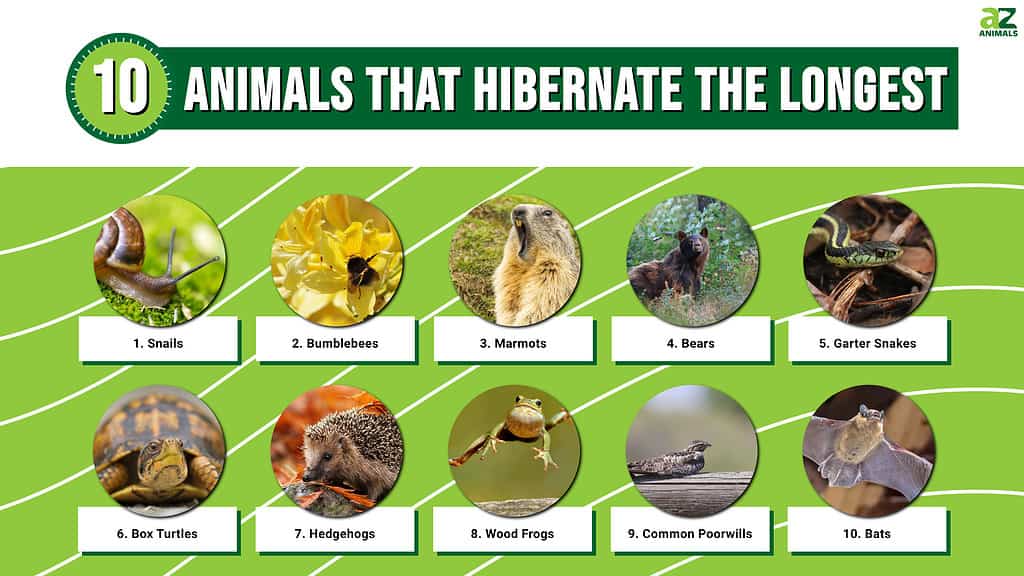
10. Bats
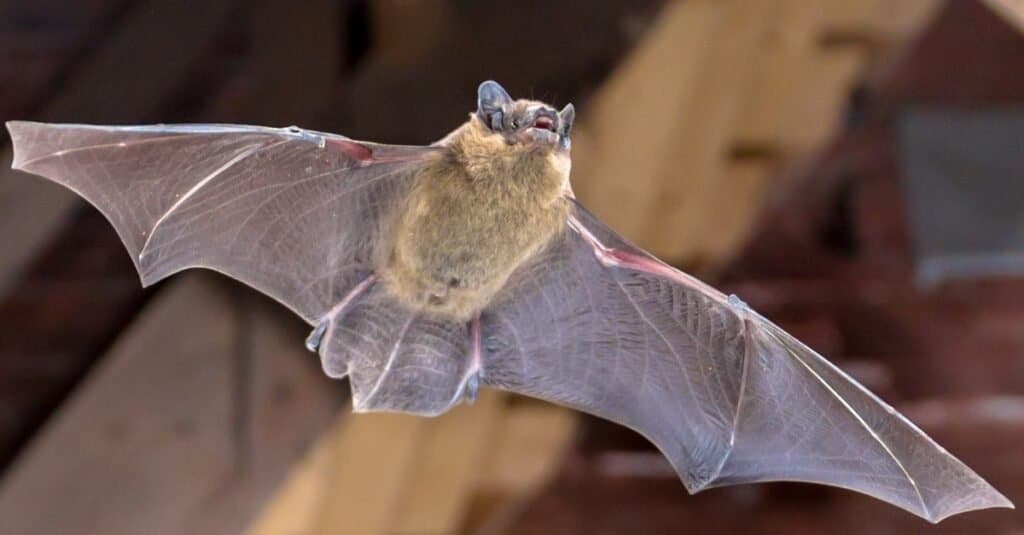
Bats can slow their pulse rates to 10 beats per minute while they are in torpor or hibernating.
©Rudmer Zwerver/Shutterstock.com
When it gets too cold or there isn’t enough food, bats enter a decreased hibernation condition called torpor, which lasts all night. Some species go one step further and hibernate through the winter. Typically, those residing in regions with fewer insects are found there. Bats cluster together up on cave ceilings or walls and can slow their pulse rates to 10 beats per minute while they are in torpor or hibernating. Bats normally start hibernating in October or November when the cold weather drives the insects away and come out of hibernation in March. Based on regional variances in seasonal temperature, bat hibernation habits can differ.
9. Common Poorwills
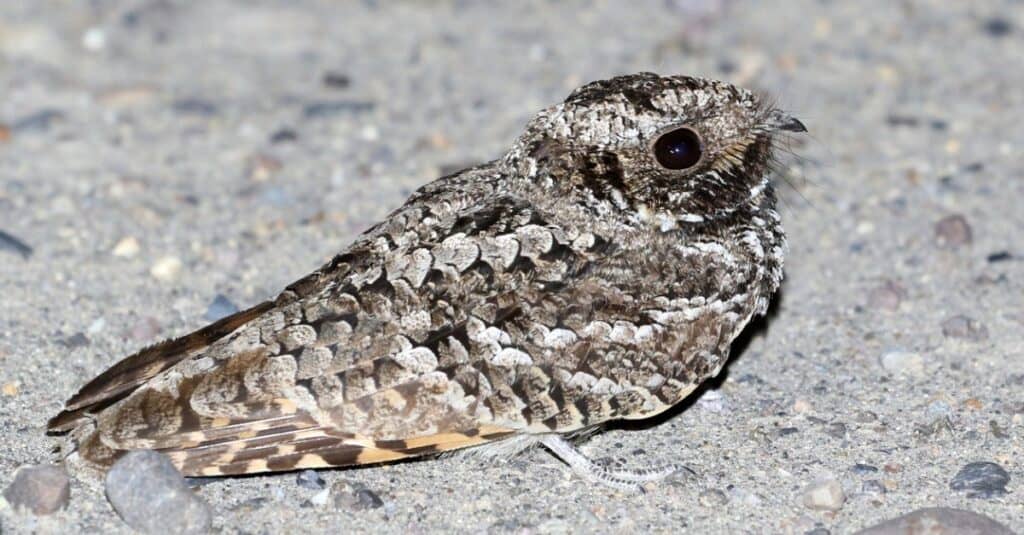
The common poorwill waits out the winter by slowing its metabolic rate and hibernating rather than migrating.
©Randy Bjorklund/Shutterstock.com
The common poorwill is a nocturnal member of the nightjar family Caprimulgidae. The majority of birds do not hibernate, which is why you don’t hear much about it. The only one does so because wintertime insect food is scarce, and that is the common poorwill. The birds wait out the winter by slowing their metabolic rate and hibernating in a hollow log rather than migrating. As the first bird species known to hibernate for weeks or even months in the wild, the common poorwill has garnered notoriety. During the 1947-1948 season, one was known to hibernate for at least 85 days.
8. Wood Frogs
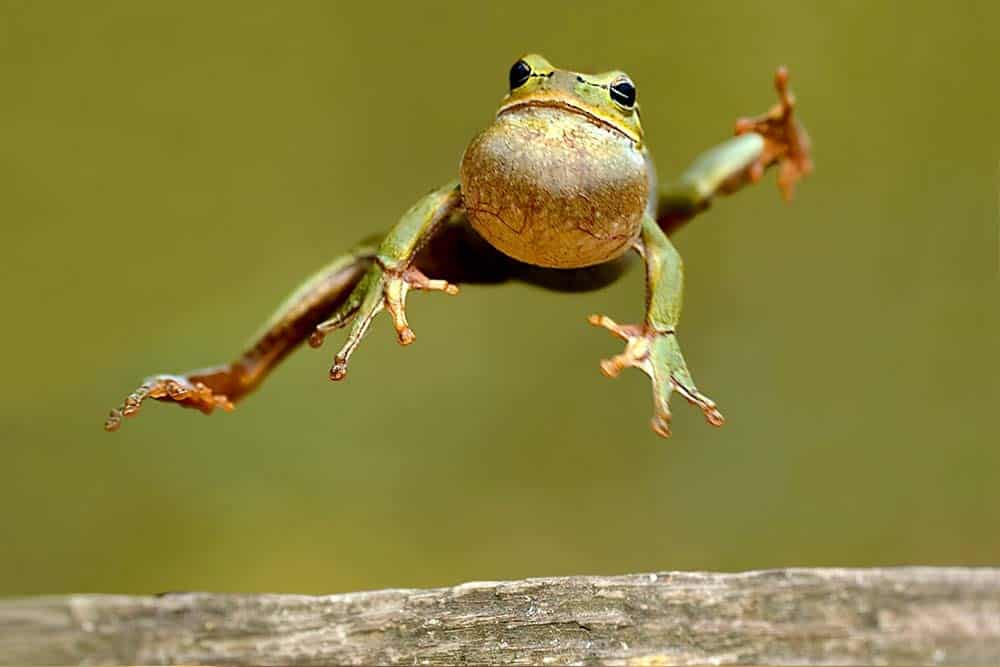
Wood frogs
develop ice crystals in their blood and spend two to three months of each winter frozen.
©kyslynskahal/Shutterstock.com
When it comes to hibernation, wood frogs go one step farther than the majority of animals by fully ceasing to breathe, stopping their hearts from beating. They actually become so cold that ice crystals start to develop in their blood. For the winter, frogs typically hibernate in logs, burrows, or heaps of leaves, where they stay until the summer when they warm up and reactivate their breathing. The approach taken by wood frogs is different. They burrow beneath the lush undergrowth on the forest floor to hibernate. Shielding the frogs from extreme cold are the leaves, litter, and overlaying snow. The wood frog spends two to three months of each winter frozen, with a body temperature that ranges from 30°F to 21°F (-1°C to -6°C), yet it doesn’t appear to worry too much. The ice melts, heartbeat and breathing resume, and the frog carries on with its carefree existence when spring eventually arrives.
7. Hedgehogs

Hedgehogs’ heart rates can fall by up to 90% during hibernation but can awaken if it becomes too cold.
©Miroslav Hlavko/Shutterstock.com
Depending on how cold the winter is, hedgehogs can hibernate for a few weeks or several months. Hedgehogs’ heart rates can fall by up to 90% while they are hibernating, yet if it becomes too cold, they may briefly awaken. When they awaken, their hearts beat faster, warming them up a little before they fall back asleep. Hedgehogs, which are native to parts of Europe, Asia, and Africa, typically hibernate from October/November until March/April. Each individual is switches nesting locations at least once throughout this time. According to research, this means you will see them occasionally out and about.
6. Box Turtles

Box turtles can spend three to five months each year hibernating.
©Studio DMM Photography, Designs & Art/Shutterstock.com
The number of turtles that hibernate varies by species and geographic area. Box turtles hibernate three to five months each year. They create an underground burrow for themselves, slow their heart rate to 5 to 10 beats per minute, and cease breathing entirely. They do not, however, lack oxygen because they absorb it via their skin. Three-toed box turtles can hibernate for up to five months out of the year due to a lack of food, the cold, and dry circumstances. Brumation is not always risk-free, and many wild and domestic box turtles lose their lives as a result.
5. Garter Snakes
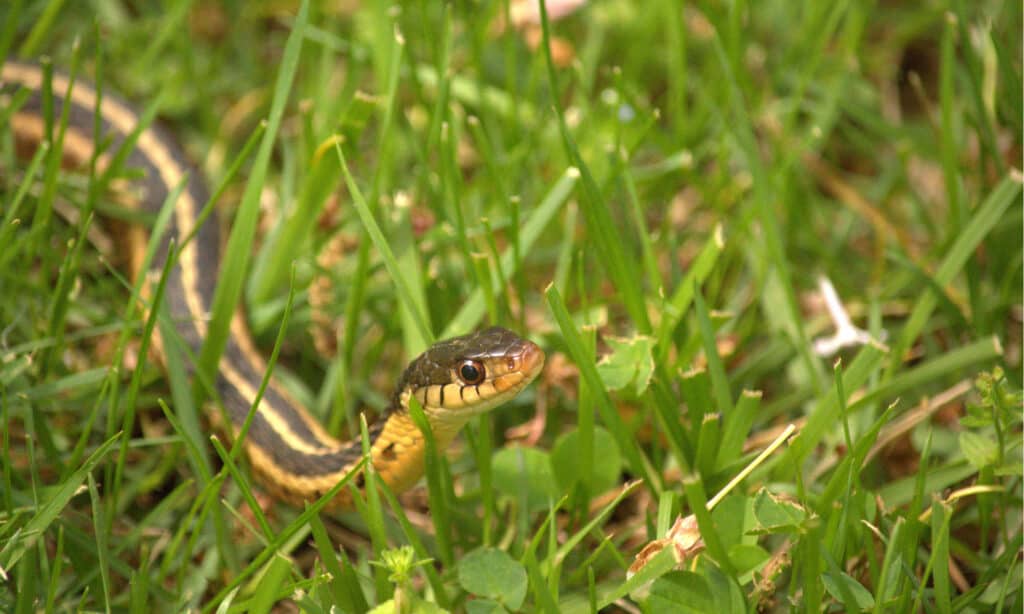
Snakes spend the winter with many of their own kind to retain heat in dens.
©Charlotte Payne/Shutterstock.com
In contrast to the solitary hibernation of many other species, garter snakes prefer to spend the winter with their own kind. Snakes can number in the hundreds or even thousands, and their den is where they all spend the winter together. For cold-blooded animals, closeness is a boon because heat retention is so important. Hibernation is necessary for the red-sided garter snake to survive Manitoba, Canada’s -40°F (-40°C) winters. Scientists know much about the transformations mammals undergo before entering hibernation, however little is known about analogous processes in reptiles.
4. Bears

In parts of the U.S. and Canada, bears can hibernate for up to eight months without leaving their caves.
©jo Crebbin/Shutterstock.com
Bears are perhaps the first animal that comes to mind when you think about hibernation, but they don’t truly do it, at least not in the genuine sense. Torpor, however comparable to hibernating in bears, is a distinct state. Bears’ breathing and heart rates slow down while they are in torpor, and their body temperatures drop, though not as much as those of species that hibernate. They can and often do swiftly come out of their slumber, but they can also remain dormant for days at a time without eating, drinking, or defecating. Bears have the ability to remain still for longer lengths of time than rodents whether eating or eliminating waste. In the northern parts of the United States and Canada, bears can hibernate for up to 8 months without leaving their cave. The same characteristics are shown by bears in the South, albeit for shorter periods of time.
3. Marmots
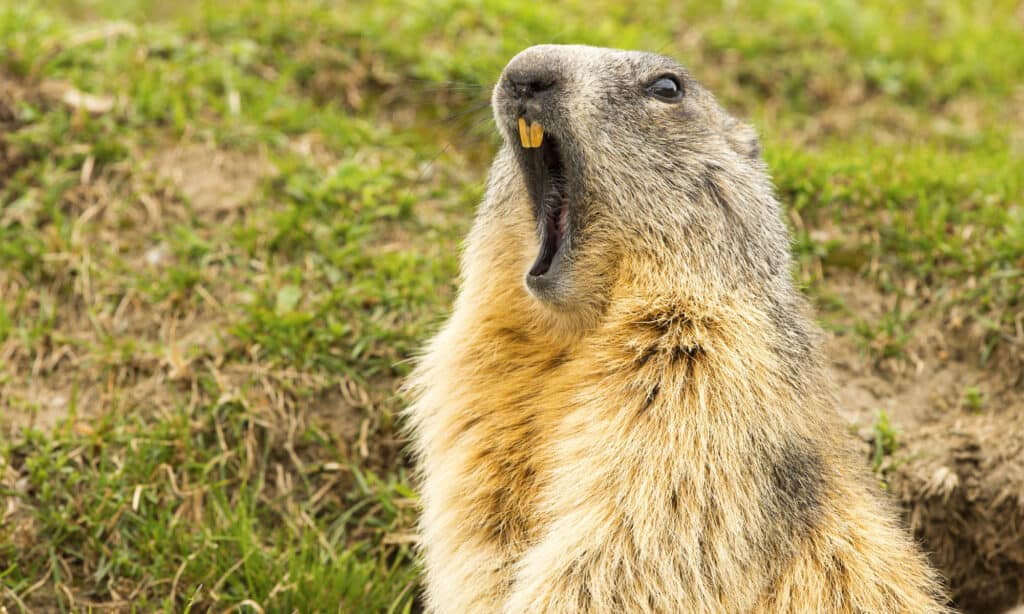
Marmots slow their breathing to 2-3 breaths per minute and their heart rate to 3-4 beats per minute when hibernating.
©Andrea Izzotti/Shutterstock.com
There are 15 species of giant ground squirrels known as marmots, which are found in Asia, Europe, and North America. These herbivores can frequently be spotted in groups throughout the summer when they are active, but they are not visible in the winter when they are hibernating underground. I mean, wouldn’t it be lovely to sleep all winter? Marmots can hibernate all winter long, sometimes for as long as eight months. Marmots can slow their breathing to 2-3 breaths per minute and their heart rate to 3-4 beats per minute when they are hibernating. They spend around eight months of the year hibernating in underground tunnels. These creatures delay their critical functions and burn stored fat while they are at rest in order to survive.
2. Bumblebees
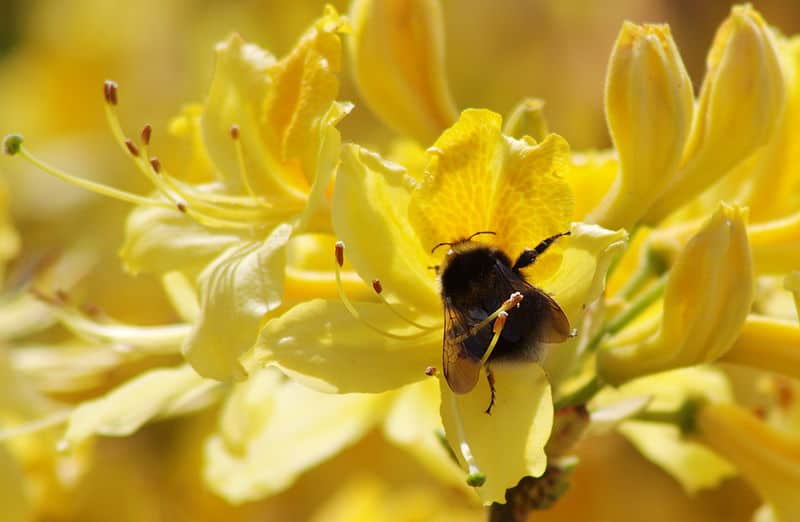
Bumblebee queens have been observed to hibernate in temperatures as low as -5°F for up to nine months.
©Julie Anne Workman / CC BY-SA 3.0, via Wikimedia Commons – License
Although not all bees hibernate, for the bumblebee, at least for the queen, it is an essential aspect of existence. When the temperature drops, every male and worker bee perishes, leaving the queen to find a suitable location to spend the winter. Bumblebee queens have been observed to hibernate in temperatures as low as -5°F (-20°C) for up to nine months. The queen is shielded from the cold, malnutrition, and the majority of predators while hibernating. Her body is able to relax thoroughly before the spring when she is busiest. The queen emerges, makes a nest, and lays an entire new colony when the temperature rises.
1. Snails
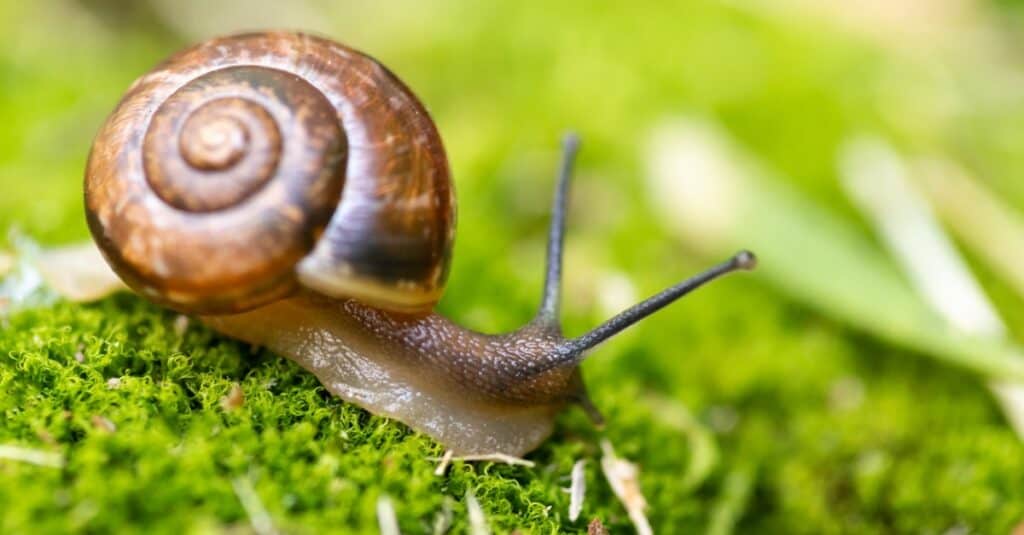
Snails can sleep for up to three years at a stretch.
©iStock.com/BushAlex
Although you might not think of snails as animals that hibernate, some do. Snails hibernate inside their shells, sealing the opening with mucus to retain moisture inside and prevent drying out. They also defend themselves from hot weather, albeit this is known as aestivation, not simply in cold weather. They can sleep for up to three years at a stretch, which seems like a very long time. Once more, this is their natural instinct for survival. If the situation is not ideal, they will sleep until conditions are safe to emerge.
Summary of 10 Animals That Hibernate the Longest
Here’s a recap of the animals we looked at that can hibernate via different methods — including reducing their metabolic rates, heart rates, and respiratory rates — to survive long periods of time without food.
| Rank | Animal | Hibernation Process | Length of Hibernation |
|---|---|---|---|
| 1 | Snails | Hibernate inside their shells, sealing the opening with mucus to retain moisture inside and prevent drying out | Can be up to 3 years |
| 2 | Bumblebees | Queens hibernate in temperatures as low as -5°F. | Up to 9 months |
| 3 | Marmots | Slow breathing to 2-3 breaths per minute and heart rate to 3-4 beats per minute when hibernating in underground tunnels | Can hibernate all winter long, sometimes up to 8 months |
| 4 | Bears | Body temperatures drop and breathing and heart rates slow down while in torpor | Up to 8 months in the northern parts of the U.S. and Canada |
| 5 | Garter Snakes | Spend the winter with many of their own kind to retain heat in dens | Winter |
| 6 | Box Turtles | Create underground burrows, slow their heart rate to 5 to 10 beats per minute, and cease breathing | 3-5 months |
| 7 | Hedgehogs | Heart rates can fall by up to 90% while hibernating; if it becomes too cold, may briefly awaken | A few weeks to several months |
| 8 | Wood Frogs | Stopping their hearts from beating; ice crystals develop in their blood; burrow in undergrowth on the forest floor to hibernate | 2-3 months |
| 9 | Common Poorwills | Slow their metabolic rate and hibernate in a hollow log rather than migrating | Weeks to months |
| 10 | Bats | Cluster together in caves and slow their pulse rates to 10 beats per minute while in torpor or hibernating | Depending on regional variances in seasonal temperatures, can start hibernating in October or November and stop in March |
The photo featured at the top of this post is © Aron M/Shutterstock.com
Sources
- Wonderopolis, Available here: https://www.wonderopolis.org/wonder/who-takes-the-longest-nap
- Mashable / Rayne Ellis, Available here: https://mashable.com/article/animals-that-hibernate
- Everything Mom / Caitlin Willow Greyling, Available here: https://www.everythingmom.com/activities/animals-that-hibernate
FAQs (Frequently Asked Questions)
Do some animals stop breathing when they hibernate?
Not all animals do, but one of the few that actually stop breathing while hibernation is the wood frog.
Do snails really hibernate?
Yes, snails can actually hibernate up to three years.
Thank you for reading! Have some feedback for us? Contact the AZ Animals editorial team.






